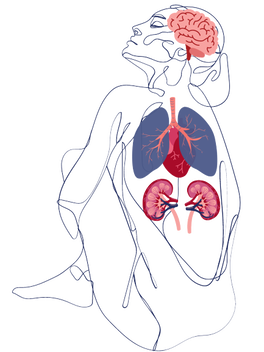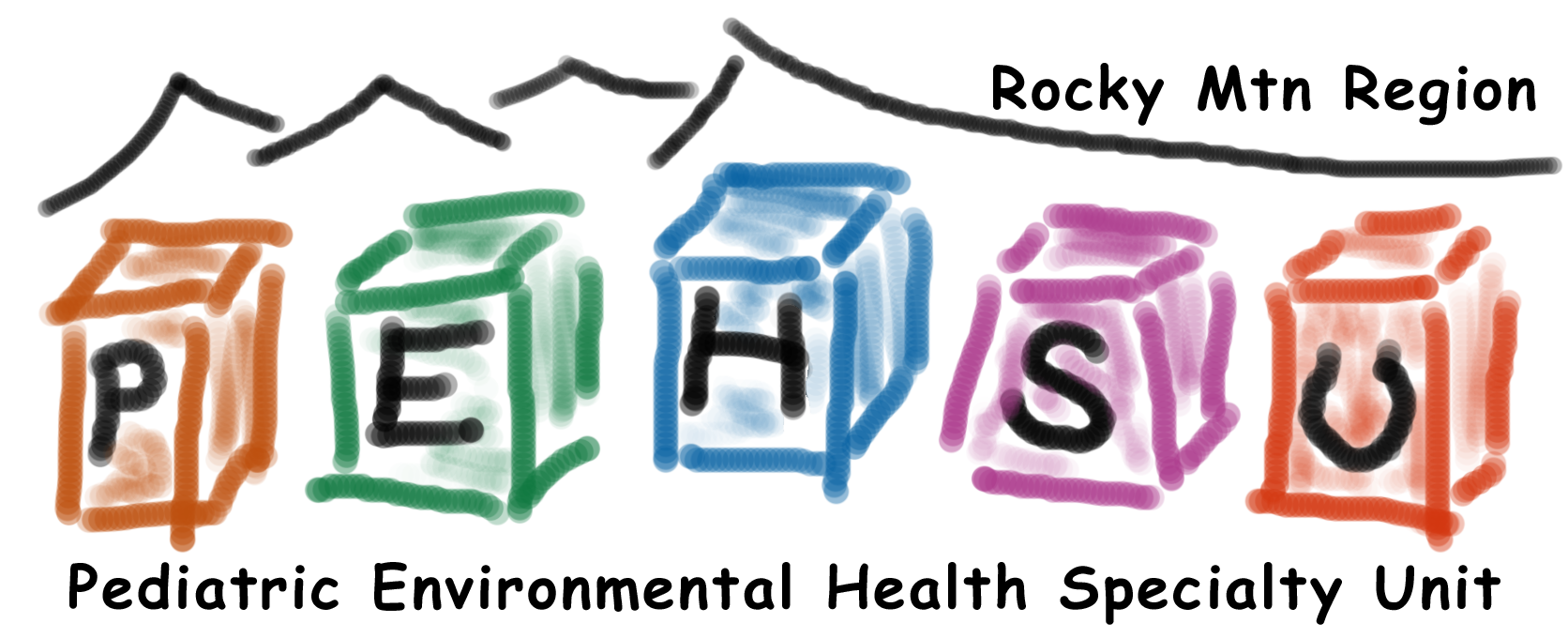Wildfire smoke is a huge threat to health, but there are ways to stay safer.
We've sorted information for patients, providers, and administrators below.
We've sorted information for patients, providers, and administrators below.
Patients
How to Track Your Local Air Quality:
Local Media
Your local newspaper, radio, and weather channel might carry info on air quality. If they don't, write to them and ask them to! |
Online
AirNow is a government program that depends on local air quality monitors to give you exact, live info about wildfire smoke and pollutants in your area. This is presented as the Air Quality Index. The Air Quality Index scale connects air quality and health impacts in a way that is easy to understand and widely used. The scale runs from Good to Hazardous air quality based on the concentration of the five most concerning pollutants. The AQI is available on many phone apps. You can also sign up for email or text alerts through AirNow's EnviroFlash program. Breezometer, another service, shows the break down of pollen as well as pollutants, which you may want to know if you have allergies. |
Protect Your Health on Bad Air Quality Days:
- Stay inside (with windows closed) whenever you can.
- Use a portable air cleaner or a box fan filter if you have one.
- Reduce physical activity during smoky times. Take it easy.
- If you can't avoid going outside to work (like many hardworking Montanans), use an N95 mask or respirator. Staying in an enclosed cab with filtered air (like an enclosed tractor) can also help. Try to limit time in the smoke whenever you can, and take breaks.
DIY Box Fan Air Filter
You will need:
- A box fan
- A square furnace filter (MERV 13 or FRP 10) about the size of your fan (usually 20 in. x 20 in.)
- Duct tape or bungee cord
- Find the arrow on the side of the filter and point this toward the fan.
- Place the filter with the arrow side on the back of the fan (the side air goes into).
- Use duct tape or bungee cord to attach the filter to the fan.
- Close all windows and doors to seal your home off from further smoke.
- Turn on your new air filter!
Providers
Particulate Matter (PM) and Wildfire Smoke
Particulate matter 2.5 (PM 2.5) is an air pollutant of significant concern. Wildfires cause an abrupt increase in PM 2.5, which often exceeds the level found in ambient air. The tiny size of PM 2.5 allows it to permeate the bloodstream and therefore affects patients' health on every level. Learn more below about the ways PM 2.5 affects neurological, cardiac, respiratory, nephrological, and reproductive health - especially in certain key populations.
How You Can Help
- Teach your patients how to wear an N95 mask correctly on smoky days.
- Help your patients keep track of local air quality -- point out the Air Quality Index website and app. Encourage patients to stay indoors with a HEPA filter or air conditioner if the AQI exceeds 100.
- Teach your patients the importance of not adding to indoor air pollution through smoking, gas range stoves, vacuuming, and candle use.
- Consider offering patients handouts on how to make their own HEPA filter fan (instructions available in our patient section).
- Ask your clinic or hospital to offer a clean air space for the vulnerable populations in your community on unsafe days. They can also fly the EPA's Air Quality Flags to give your community an easy way to know when air quality is unsafe.
- Be a community advocate for policy decisions that protect air quality and reduce CO2 emissions.
- Read below about the effects of wildfire smoke on specific body systems and vulnerable populations.
- Download our patient handout below.
| wildfire.patients.flyer.-1.pdf | |
| File Size: | 900 kb |
| File Type: | |
Neurological Effects
Particulate matter 2.5 can lead to oxidative stress in the body. PM 2.5 impairs mitochondrial function pathways for neuronal and astrocyte activity (Kolosowska et al, 2020). The effects of P.M 2.5 on mitochondrial function of the brain manifest as cognitive impairment, especially for children (Shang & Xue, 2023).
|
Cardiac EffectsHigher levels of PM 2.5 are correlated with increasing rates of cardiac arrhythmias, worsening heart failure, and other cardiovascular ischemic events such as stroke (Hadley et al, 2022; Chen et al, 2021; Murray et al, 2020).
|
Respiratory EffectsDuring wildfire season, research has shown that a spike in respiratory illness occurs for people of all ages, leading to increased hospitalizations (Stowell et al, 2019). Smaller airways may be a risk factor (Mirabelli et al, 2009). Additionally, exposure to wildfire smoke has been linked to respiratory morbidity, especially in patients under 5, patients, with asthma, and patients with COPD (Matz et al, 2020; Henry et al, 2021).
|
Nephrological Effects
“PM2.5 exposure in the first trimester of pregnancy and first fourteen months of life may have implications for kidney health in adolescence.” (Rosa e.al, 2019). Through a literature review on the adverse effects of PM2.5 and human kidney function, thirty-six out of forty studies showed that PM2.5 exposure worsened kidney function (Rasking et al, 2022).
|
Frontline Populations
Pregnant people, children, older people, people of color, people with lower incomes, and outdoor workers are put at a higher risk for health complications from wildfire smoke.
Fetal-Maternal Health
|
Children
|
People of Color
|
People in Poverty
|
Outdoor Workers
|
Administrators
|
A 2008-2012 health analysis in the U.S. linked 1500-2500 premature deaths to short-term wildfire smoke and an economic cost of $11-$20 billion U.S dollars. Long-term exposure to wildfire smoke showed 8700-32,000 premature deaths and an economic cost of $76-$130 billion USD. (Fann et. al, 2018).
|
Particulate matter 2.5 (suspended particles of smoke) & human health
PM 2.5 travels deep into the respiratory system, enters the bloodstream, and has been found in the brains, kidneys, and on the fetal side of the placenta. It also:
- triggers ischemic events and cardiac dysrhythmias
- aggravates asthma and all respiratory diseases
- adversely affects kidney function
- negatively affects cognitive function
- increases risk for pre-term birth in pregnant people
- decreases lung function in children
How you can help
- Keep the HVAC system regularly serviced.
- Offer a clean air space for the vulnerable population in your community.
- Assess your public building for appropriate air filtration.
- Educate local residents through a wild smoke awareness week.
- Consider box fan or HEPA filter distribution (and contact us to work together)!
- Have easy-to-access information on how community members can track air quality. Our Air Quality Flag program might be a good fit for your community, if the flags aren't already flying!
Track your local air quality
|
|
The Air Quality Index scale connects air quality and health impacts in a way that is easy to understand and widely used. Local, up-to-date air quality data can be found at www.airnow.gov.
IS YOUR HOSPITAL IN A WILDFIRE THREAT ZONE? Find out at hazards.fema.gov/nri/wildfire and read the US EPA's guide, Wildfire Smoke: A Guide for Public Health Officials for specific strategies to reduce smoke impacts. |
Banners
We developed a series of educational banners for display in your waiting rooms. You can download our wildfire smoke banner here, or contact us to sign up for a time to host our high-quality banners in your waiting room or lobby for free!
| Wildfire_Banner.pdf | |
| File Size: | 8539 kb |
| File Type: | |









